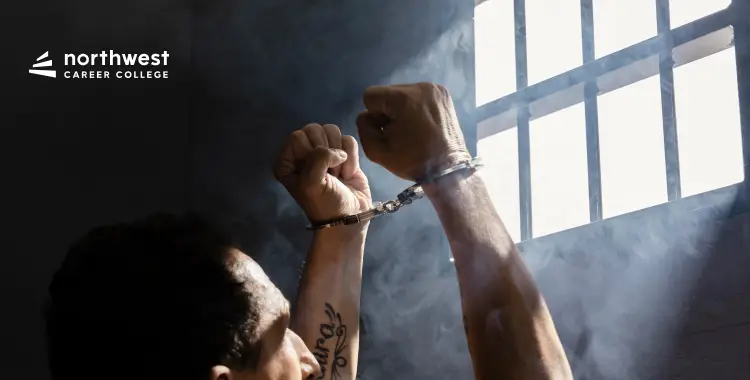Crime Prevention Strategies: What Works and What Doesn’t
- October 30, 2024
- 6.6k views
- 4 min read

Crime hotspot patrols focus on deploying more police officers in areas with a high crime rate. Such a focused approach would intimidate offenders by ensuring greater police visibility in troubled regions. Research findings support hotspot policing as reducing crimes without displacement to other neighborhoods.
These patrols are effective in deterring burglary, robbery, and assault. By placing the officers in the right places at the correct times, they can reduce crime in high-risk areas. However, these patrols must be combined with other measures, like community involvement, to avoid overpricing the residents.
Read More: Is a Criminal Justice Program Expensive?
Harsh Punishments
Harsh punishments, like longer prison sentences or even the death penalty in extreme cases, are often used in hopes of discouraging crime. However, research shows that these measures don’t always stop people from committing crimes, especially if they think they won’t get caught.
While severe punishments remove criminals from the streets, they don’t address the underlying issues that lead to crime, such as poverty, lack of education, and mental health problems. All these factors can potentially lead to more unjust crime in the community. Additionally, these punishments don’t focus on rehabilitating offenders or helping them reintegrate into society after serving their sentence.
Youth Programs
The most potent crime prevention method is one directed towards young people. Youth programs offering education, recreation, and mentoring provide a resourceful engagement of time and keeps the youth busy so they cannot engage in criminal activities. Such programs offer help, advice, and support so that the at-risk youth develop the coping ability to make more positive choices and avoid crime. Local criminal justice programs support many of these initiatives, where trained professionals and students work together to create positive change in their communities.
After-school programs, sports teams, and community centers provide positive activities that provide youth with skills and confidence. Programs that grant youth mentorship also offer them a chance to build healthier relationships while setting goals for the future.
Benefits of Youth Programs:
- Reduces free time that may be utilized on delinquent activities.
- Provides positive role models and mentors.
- Encourages education and growth.
Investing in the youth secures a future wherein communities win out in preventing crime before it has even been committed.
“Stop and Frisk” Policies
“Stop and frisk” policies allow police officers to stop and search individuals they suspect might be involved in criminal activity. Police introduced these policies as part of their efforts to reduce crime in high-crime areas. However, research has shown that “stop and frisk” has been largely ineffective and, in some cases, harmful.
One major issue is that “stop and frisk” disproportionately targets minority communities, leading to a breakdown of trust between residents and law enforcement. Additionally, most searches under these policies don’t result in arrests, meaning many innocent people are subjected to unnecessary stops. This damages relationships between the community and police, making people less likely to cooperate with law enforcement and weakening long-term crime prevention efforts.
Community Policing
Community policing remains one of the best methods of crime prevention. It builds relationships between law enforcement and the community they serve. The method allows an officer to directly participate with the community to find solutions to problems, deter crimes, and increase safety within an area.
Community policing instills trust between police and the community, enabling crime reporting and assisting in police efforts. This will also aid officers in understanding the needs and concerns of the patrolled neighborhoods.
What works in community policing:
- This program encourages communication and builds trust between police and residents.
- This program focuses on preventing crime through problem-solving and collaboration.
- This program helps ensure that officers know about a particular community’s needs.
For instance, when people find it safe to work with the police, they become willing to report suspicious activity, which quickly leads to crime prevention.
Conclusion
Trust-building strategies, root-cause-based crime prevention strategies, and community-wide interventions must be implemented. Successful variants include community policing, hotspot patrols, and selective programs focusing on youth. Some failed variants include severe sanctions, “stop and frisk” policies, etc. Focus on what works, and a safer environment for everyone can be created.
If you are passionate about helping make a difference in your community and want more information about criminal justice, enroll in our Criminal Justice Program at Northwest Career College today. Our programs will give you the skills and knowledge you need for a rewarding career in law enforcement, social work, or another area of criminal justice.





